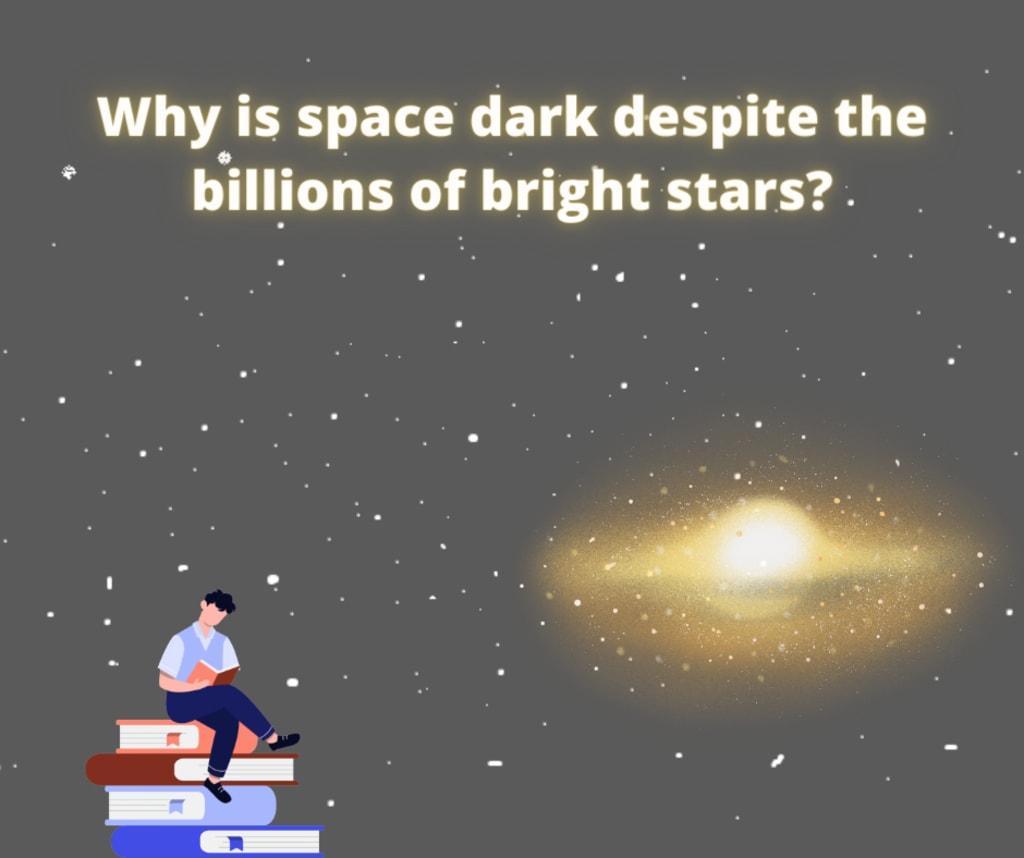
The universe contains more than a hundred billion galaxies, if we don't say an infinite number of galaxies, and each galaxy contains billions of bright stars like flames, for example, our Milky Way galaxy, the estimated number of stars in it is 200 billion stars, some of which are the size of our sun and others are millions of times larger than our sun. On every clear night in the form of stars in the sky, then logically the night should be as bright as the middle of the day.
So what exactly happens in space to keep it black and dark?
It was taken for granted 220 years ago, based on the theory of the German astronomer "Albert Mart" that if the universe is eternal and truly endless, then in the end, wherever you look, you will still be able to see a star among billions of stars. You won't be able to see galaxies as scientists do. By using their devices, for example, a large space, what you will see is the nearby stars in our galaxy and even the distant ones in our neighboring galaxies, and even if you travel for millions or billions of light years, in the end, you will inevitably find a star.
For hundreds of years, many scientists have wondered why the sky is dark despite the presence of millions of stars in space, including "Johannes Kepler" after whom the space probe "Kepler" was named, and also "Edmond Halley" after whom the famous "Halley" comet was named, but the astronomer The German "Heinrich Wilhelm Olbers" is the one who attributes the "Olbers" paradox or the dark sky paradox to him, as Olbers wondered if the universe was eternal and unlimited parties and had an infinity of stars as old as the universe itself. If the matter is true, then the midnight sky must be bright like the day.
In an attempt by some scientists of the nineteenth century to understand this strange paradox, they relied on the hypothesis that the cosmic clouds of dust between the stars absorb the radiation of light coming from these stars, which leads to the lack of light reaching us on Earth, but this hypothesis was just empty talk for one reason only, which is that if we assume for the sake of argument that it is real and correct, then these clouds would have absorbed that light over millions and billions of years so that those clouds themselves would become hot, radiant and bright, and therefore the space would become more glowing and luminous, which contradicts and destroys the hypothesis.
One of the logical answers to this mysterious paradox is two hypotheses. The first hypothesis says that light is present in space, but the difference factor here is that it isn't refracted or dispersed as it happens on the planet Earth. The day on our planet is because the sun's rays when they reach the earth's atmosphere are dispersed. It spreads throughout the atmosphere to cause daylight as we see it, but in space, it is completely different, as there isn't enough matter to cause starlight dispersion due to the large void in space.
The second hypothesis was born after scientists dispensed with the idea of the eternal universe at the end of the nineteenth century, to admit that the universe had a beginning, as Baron Kelvin was able to prove mathematically that a universe with a finite age, just like ours, must be dark, as the finite universe has a starting point like any other destiny. Astronomically, it was born 13.8 billion years ago as a result of a huge explosion called the "Big Bang", then it began to expand and is still going on now.
As a natural result of this cosmic expansion, galaxies, and all other celestial bodies are moving away from us every second. This expansion affects everything, including light.
When you see a star in the sky, let us assume that this star is a thousand light years away from us, in fact, what you see is the light that was emitted from that star 1000 years ago, and because of the accelerating expansion in the universe, the light that was emitted from that star for the first time will need to travel a distance of a thousand light years For it to reach us, therefore, the light of that star on its way to us kept
diminishing little by little due to the distance between us, and who knows, perhaps that star has exploded now, but we cannot see the explosion until after a thousand light years from now, which is the distance that the light of the explosion will need to travel to reach us, which is what is called Impossible to coincide.





Comments
There are no comments for this story
Be the first to respond and start the conversation.